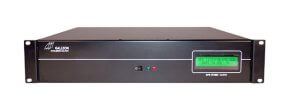Japan Loses Atomic Clock Signal after Quakes
| By Richard N Williams
Having suffered earthquakes, a catastrophic tsunami, and a nuclear accident, Japan has had a terrible start to the year. Now, weeks after these terrible incidents, Japan is recovering, rebuilding their damaged infrastructure and trying to contain the emergencies at their stricken nuclear power plants.
But to add insult t injury, many of the Japanese technologies that rely on an accurate atomic clock signals are starting to drift, leading to problems with synchronisation. Like in the UK, Japan’s National Institute of Information, Communications and Technology broadcast an atomic clock time standard by radio signal.
Japan has two signals, but many Japanese NTP servers rely on the signal broadcast from mount Otakadoya, which is located 16 kilometres from the stricken Daiichi power station in Fukushima, and falls within the 20 km exclusion zone imposed when the plant started leaking.
The consequence is that technicians have been unable to attend to the time signal. According to the National Institute of Information, Communications, and Technology, which usually transmits the 40-kilohertz signal, broadcasts ceased a day after the massive Tohoku earthquake struck the region on 11 March. Officials at the institute said they have no idea when service might resume.
Radio signals that broadcast time standards can be susceptible to problems of this nature. These signals often experience outages for repair and maintenance, and the signals can be prone to interference.
As more and more technologies, rely on atomic clock timing, including most computer networks, this susceptibility can cause a lot of apprehension amongst technology managers and network administrators.
Fortunately, a less vulnerable system of receiving time standards is available that is just as accurate and is based on atomic clock time—GPS.
The Global Positioning System, commonly used for satellite navigation, contains atomic clock time information used to calculate positioning. These time signals are available everywhere on the planet with a view of the sky, and as it is space-based, the GPS signal is not susceptible to outages and incidents such as in Fukushima.




